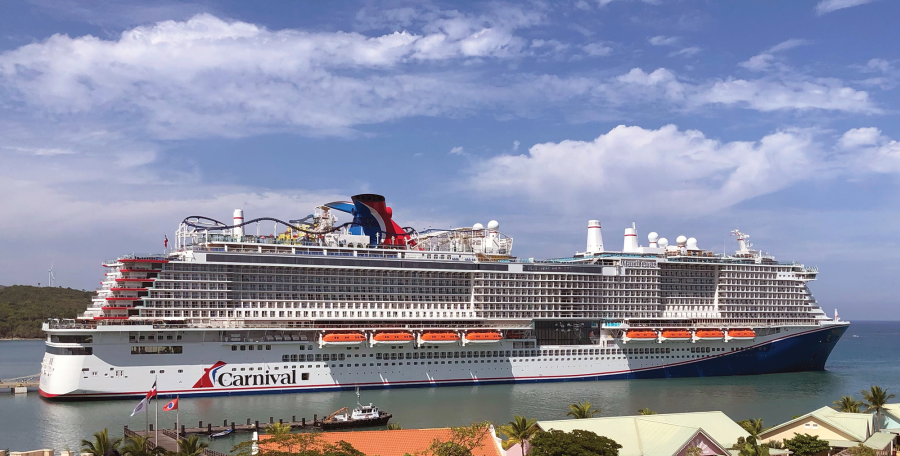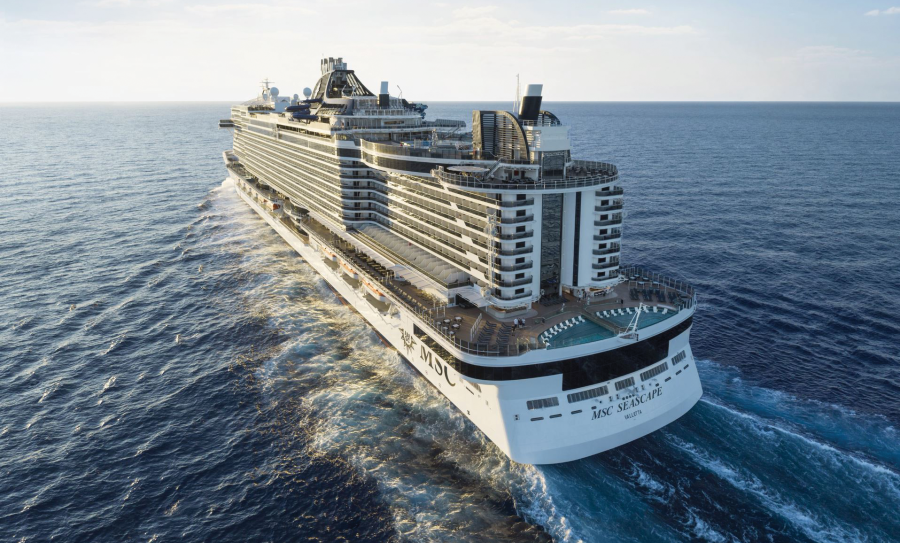With some mega-sized cruise ships carrying as many as 9,000 passengers and crew members, it’s not an exaggeration to characterize them as small cities. Like municipalities, these attractions encompass complex infrastructures. Unlike land-based cities, cruise ships have a unique relationship with—and a responsibility to care for—the oceans and waterways they ply. But they are part of the global community as well, and the cruise industry is doing its part to account for its environmental impact.
Setting Goals
“We are particularly focused on decarbonization, and we are optimizing our fleet and investing in new technologies,” says John Haeflinger, senior vice president, sustainability and maritime policy for Carnival Corporation, one of the world’s largest cruise vacation companies. Across its nine brands, which include the flagship Carnival Cruise Line, as well as Princess Cruises and Holland America Line, the company’s fleet numbers more than 90 ships. How committed is Carnival to reducing its carbon footprint? Josh Weinstein, who assumed the role of president and CEO last year, also carries the title of chief climate officer. “We aspire to achieve net carbon-neutral ship operations by 2050,” Haeflinger notes.
That’s a date-specific target shared by other major cruise companies, including Royal Caribbean Group, Norwegian Cruise Line, and MSC Cruises. Their pathways to sustainability incorporate near-, medium-, and long-range goals. MSC, for example, is aiming for a 40% reduction in carbon emissions by 2030 against a 2008 baseline.
Powering Through Barriers
Since ships have central sources of energy that not only power entire vessels but the massive engines that enable them to travel from port to port, much of the companies’ decarbonization efforts have focused on the fuel they use. Several lines have introduced ships that are powered by liquefied natural gas (LNG). Compared to conventional marine fuel, LNG vessels generate less carbon emissions, reduce nitrogen oxides, and virtually eliminate particulate matter and sulfur oxides.
Carnival Cruise Line’s Excel-class Mardi Gras debuted in 2020 as one of the first LNG-powered cruise ships with excursions departing from North America. Carnival’s parent corporation now has nine such ships across its worldwide fleet, with plans to introduce 11 more by 2025. MSC’s first vessel to use LNG, World Europa, was delivered in October 2022. Its second is on its way this year, and a third is under construction.
“LNG is the cleanest marine fuel currently available at scale,” the MSC spokesperson says. But there are better alternatives on the horizon. “LNG engine technology onboard our ships will also enable us to use bio and synthetic drop-in fuels as they become more widely available,” adds a MSC spokesperson.
As part of a Carnival Corp. proof-of-concept pilot initiative, the Holland America Line Volendam was the first large-scale cruise ship to run 100% on biofuel made from sustainable materials, such as used cooking oil and animal fats, while the AIDAprima uses a blend of marine gas oil and biofuel.
“We are working with suppliers to encourage investment in a reliable supply infrastructure,” Haeflinger says about biofuels, which offer environmental benefits through their life cycle CO2 reductions.
Several other low-carbon and zero-carbon alternative fuels and power technologies include bio-LNG, eLNG (electricity-driven production of renewable LNG), biodiesel, ammonia fuel, methanol, hydrogen fuel, fuel cells, and battery systems such as lithium-ion. Ship operators are also looking at ways to capture and store carbon. The larger shipping industry—of which the cruise sector represents a small portion—is investigating the viability and scalability of these and other fuel sources for maritime applications through an alliance known as the Getting to Zero Coalition.
Onboarding Efficiencies
Cruise companies are also finding ways to reduce onboard power consumption by seeking efficiencies. On a macro level, companies are retiring smaller, less efficient ships and replacing them with bigger, more efficient ones. They are also implementing technology upgrades such as improved HVAC systems and lower-watt LED lighting. Additionally, innovative air lubrication systems reduce a ship’s frictional resistance and the power required to propel it through water by generating a carpet of bubbles along the flat bottom of its hull. According to Haeflinger, the technology can save about 5% in propulsive power. Carnival has four air lubrication systems installed in its fleet with more on the way.
Some cruise lines are reducing their fuel needs and emissions output by increasing their ships’ abilities to use shore power while in port. In some cases, the electricity generated comes from renewable sources such as hydro, wind, and solar. While shore power is currently available in some ports, such as Hamburg, Vancouver, and Los Angeles, it is not widespread. Other ports, including Barcelona, Genoa, and Miami, are developing shore power capabilities.
Sustainability efforts extend beyond fuel and power considerations and encompass the environmental gamut. For example, by using desalination and reverse osmosis systems to transform seawater, most cruise ships can produce much of their freshwater needs, including potable drinking water. According to Royal Caribbean, the cruise line generates 90% of its own water. Per international and maritime standards and law, ships have onboard wastewater treatment plants, thereby preventing the discharge of sewage into the ocean.
Food for Thought
Cruise ships are known for their bountiful buffets. What, you may wonder, happens to the food waste? Carnival has installed biodigesters to break down the waste and dehydrators to remove water content, reducing up to 90% of waste volume. The operator has also established goals to decrease the amount of food waste generated in the first place. Haeflinger says that Carnival met its 30% reduction target in 2022 and is aiming for a 50% reduction in food waste by 2030.
MSC has a dedicated environmental compliance officer assigned to each of its ships. Prior to a cruise, the officer develops a voyage environmental plan that outlines how it will handle the vessel’s waste stream, including the collection, storage, and delivery of recyclable and waste materials such as plastics, paper, and glass.
“Over the past 15 years, we have made great progress reducing our carbon emission intensity,” says Carnival’s Haeflinger. “We recognize there is more work to be done.”


